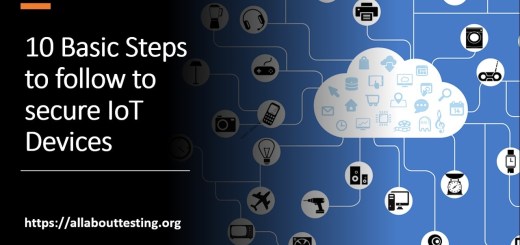Brief Overview: Biometric Security

In our rapidly evolving digital era, where data breaches and identity theft are constant concerns, the demand for robust security measures has never been greater.
One technology that has gained significant traction in recent years is biometric security.
Utilizing unique physical or behavioural attributes for authentication, biometrics promises a new level of security that goes beyond traditional methods.
This blog provides the importance of biometric security, exploring its applications, advantages, and role in safeguarding our digital future.
The Rise of Biometric Security
Biometric security involves using individual biological or behavioural characteristics, such as fingerprints, facial recognition, iris scans, voice patterns, and even behavioural traits like typing speed, to verify and authenticate users.
This personalized approach offers a more secure and convenient alternative to traditional methods like passwords or PINs.
Types of Biometric
| Sr. No. | Biometric Modality | Description | Attributes |
| 1. | Fingerprint Recognition | Analyzes unique patterns of ridges and valleys on fingertips. | Inherent, Universal, High accuracy |
| 2. | Facial Recognition | Identifies individuals based on facial features such as distance between eyes, nose shape, etc. | Non-intrusive, Widely accepted, User-friendly |
| 3. | Iris Recognition | Captures and analyzes unique patterns in the colored part of the eye (iris). | Captures and analyzes unique patterns in the coloured part of the eye (iris). |
| 4. | Retina Scanning | Focuses on unique patterns of blood vessels at the back of the eye. | High accuracy, Invasive, Limited usage |
| 5. | Voice Recognition | Analyzes unique vocal characteristics, including pitch, tone, and speech patterns. | Non-intrusive, Suitable for remote authentication |
| 6. | Hand Geometry | Measures and analyzes physical characteristics of the hand, including palm and finger size. | User-friendly, Low false acceptance, Fast verification |
| 7. | Vein Recognition | Captures unique patterns of veins beneath the skin's surface, often in the palm or fingers. | Secure, Difficult to forge, Non-intrusive |
| 8. | Gait Recognition | Analyzes unique walking patterns, including stride length and walking speed. | Behavioral, Continuous authentication |
| 9. | Keystroke Dynamics | Analyzes unique typing patterns, including typing speed and key pressure. | Behavioural, Continuous authentication |
| 10. | Ear Recognition | Examines unique features of the ear, including its shape and structure. | Stable, Non-intrusive, Limited usage |
| 11. | DNA Biometrics | Analyzes an individual's genetic code for unique markers. | Infallible, Unique, Ethical considerations |
| 12 | Palmprint Recognition | Focuses on unique patterns on the palm's surface, including lines, ridges, and creases. | Non-intrusive, Distinctive, Limited usage |
Applications Across Industries
Mobile Devices and Smartphones
Biometric authentication has become commonplace on smartphones, with fingerprint and facial recognition technologies allowing users to unlock their devices securely.
Financial Services
In the financial sector, biometrics are increasingly being adopted for secure access to banking applications, ATMs, and online transactions.
Healthcare
Biometric security plays a crucial role in healthcare, ensuring secure access to patient records, prescription information, and sensitive medical data.
Government and National Security
Governments worldwide are leveraging biometrics for border control, passport authentication, and criminal identification, enhancing national security measures.
Corporate Environments
Many organizations are implementing biometric access control systems to secure physical premises, restrict unauthorized access, and protect sensitive areas.
Advantages of Biometric Security
Enhanced Security
Biometric identifiers are unique to each individual, making it significantly harder for unauthorized access compared to traditional methods like passwords.
Convenience and User Experience
Biometric authentication is seamless and user-friendly, eliminating the need for remembering complex passwords or carrying physical access cards.
Reduced Fraud
With biometrics, the risk of identity theft and fraud is minimized, as it's challenging for malicious actors to replicate or forge biometric data.
Increased Efficiency
Biometric systems facilitate faster and more efficient access, streamlining processes and reducing waiting times.
Challenges and Considerations
While biometric security offers numerous advantages, it's essential to address potential challenges such as privacy concerns, data storage, and the risk of biometric data being compromised.
Striking a balance between security and user privacy remains a key consideration for successful implementation.
Conclusion
As we navigate an increasingly digital landscape, the importance of robust security measures cannot be overstated.
Biometric security emerges as a promising solution, providing enhanced protection, user convenience, and efficiency across various industries.
As technology continues to advance, the widespread adoption of biometrics is poised to play a pivotal role in securing our digital future.
Embracing this innovative approach to authentication is not just a step forward; it's a leap into a more secure and connected world.
Subscribe us to receive more such articles updates in your email.
If you have any questions, feel free to ask in the comments section below. Nothing gives me greater joy than helping my readers!
Disclaimer: This tutorial is for educational purpose only. Individual is solely responsible for any illegal act.








